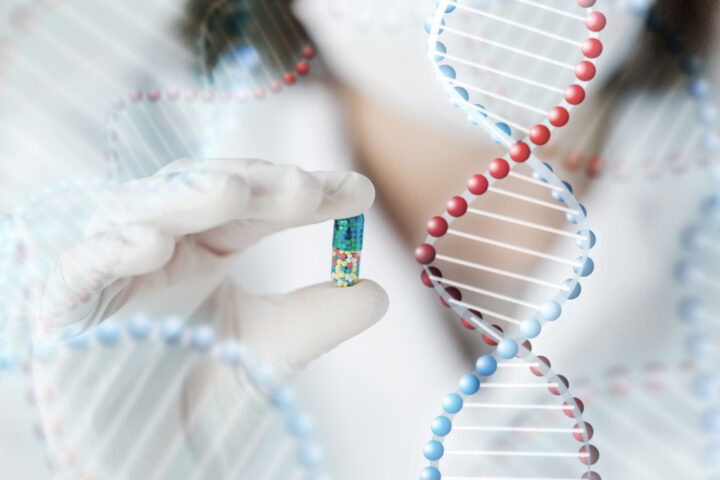Aging may seem like the gentle passage of time, but beneath the surface, it’s a storm of molecular chaos. One of the central players in this dance is genomic instability. Imagine your genome, a vast library of life’s instructions, working seamlessly to maintain your cellular orchestra. Over time, however, errors creep in—like typos in a manuscript—that disrupt cell function and propel the aging process. Genomic instability, these accumulating errors in our DNA, lies at the core of what makes us grow old.
Recent studies have illuminated how genomic instability fuels aging, from random DNA breaks to persistent mutations that lead to chronic illness. A study out of the University of Cologne, for example, showcases the effects of accumulated mutations in blood cells, using advanced single-cell sequencing techniques to capture how mutational patterns accelerate aging in regenerating blood systems. This is not merely about DNA damage but a broader breakdown in DNA repair systems that leaves cells vulnerable to age-related damage. Let’s dive deeper into the intricacies of this phenomenon and why it’s increasingly seen as the “gateway” to aging.
DNA Damage and Cellular Mayhem: When Good Cells Go Rogue
Each day, our cells experience thousands of DNA breaks from exposure to UV rays, environmental toxins, and natural cellular processes. Our cells are equipped with robust repair mechanisms, but like a car with wear and tear, these systems falter over time. A critical aspect of genomic instability is the accumulation of double-strand DNA breaks. Left unchecked, these breaks can lead to irreversible mutations that disrupt gene expression and lead to cellular dysfunction.
Recent research from Stanford University demonstrates how persistent DNA damage in neurons directly impairs brain function, contributing to neurodegenerative diseases common in aging. This research underscores that certain types of DNA damage are so persistent they change the cellular landscape—essentially altering the course of a cell’s “life.” Think of it as plot twists in your favorite series that completely change the storyline for the worse. Cells may even enter a “senescent” state, where they’re alive but no longer dividing, slowly leaking inflammatory molecules that damage surrounding tissue and speed up aging.
From Repair to Disrepair: Why Our Cells Struggle to Keep Up
It’s not just the DNA damage that drives aging—it’s our cells’ waning ability to repair it. Research out of Oxford’s K.J. Patel Lab recently revealed that cells in older adults have a reduced response to DNA repair mechanisms, especially in stem cells crucial for regenerating tissues. This vulnerability is why elderly bodies heal more slowly and why aging is often marked by chronic diseases.
Take formaldehyde, for instance—a chemical our bodies naturally produce. Patel’s team discovered that over time, formaldehyde accumulates in the bloodstream, causing DNA damage that impairs blood cell production and disrupts immune responses. This discovery highlights the complex interplay between DNA damage and aging, suggesting that even minor changes in our cellular environment can trigger a cascade of aging effects.
Epigenetic Marks and Aging: The New Frontier of Genomic Clocks
Perhaps the most fascinating aspect of genomic instability is its relationship to the epigenome—the chemical “tags” on our DNA that influence gene expression. Emerging studies have shown that as we age, our epigenetic landscape undergoes drastic changes, many of which stem from genomic instability. Researchers at Weill Cornell found that retroelements, segments of DNA originally from ancient viral infections, become reactivated with age. These rogue elements disrupt gene expression and cause inflammation—a hallmark of aging.
This “epigenetic chaos” is now at the forefront of aging research, with scientists developing highly accurate “biological clocks” based on DNA methylation patterns that correlate with aging. Such insights could lead to breakthroughs in anti-aging therapies and diagnostics, offering new hope for detecting and mitigating aging-related damage.
Age-Related DNA Damage and Immunity: A Tale of Inflammation
As DNA damage accrues, it sparks immune responses that were initially designed to ward off infections. However, the immune system, now constantly on high alert, ends up creating a low-grade inflammation that permeates the body—a process researchers call “inflammaging.” Studies at the University of Crete are exploring how damaged DNA triggers these immune responses, using models of age-induced inflammation that show its role in promoting age-related diseases.
Inflammation, therefore, becomes a double-edged sword: it’s the immune system’s response to the damage, but it exacerbates the very damage it’s meant to control. The result is an increasingly unstable cellular environment that not only accelerates aging but sets the stage for conditions like heart disease, arthritis, and Alzheimer’s.
New Frontiers: DNA Repair and Genomic Stability as Anti-Aging Strategies
Recent research continues to uncover promising interventions that stabilize genomic integrity. Studies have highlighted the role of SIRT6, a sirtuin protein that enhances DNA repair mechanisms and extends lifespan in model organisms. Enhancing SIRT6 expression has been linked to better genomic maintenance and delayed aging.
Additionally, investigations into DNA repair mechanisms have shown that increasing the expression of specific DNA repair genes correlates with extended longevity. Some interventions, such as CRISPR-based gene editing, are being explored to directly correct DNA mutations associated with aging. Other approaches focus on stabilizing the epigenetic landscape, preventing rogue DNA elements from triggering harmful inflammatory responses.
A fascinating emerging theory is the role of genetic network stability in mitigating the accumulation of regulatory deviations in gene expression. Theoretical models propose that stabilizing these networks can reduce age-related cellular dysregulation, potentially extending healthspan.
A New Dawn in Genomic Stability: Future Therapeutics on the Horizon
With the insights gained from recent genomic research, the future of anti-aging therapies looks promising. Scientists are exploring interventions that range from boosting DNA repair pathways to halting rogue DNA elements. There is also significant interest in compounds that can enhance DNA repair in stem cells, potentially delaying the onset of age-related decline. Techniques such as CRISPR gene editing and the use of specialized proteins to stabilize telomeres are at the cutting edge of genomic stability research, hinting at a future where aging itself could be delayed or even reversed.
As the science progresses, the possibility of reducing genomic instability—and thereby slowing down aging—moves from science fiction to science fact. The prospect of a longer, healthier life lies on the horizon, intertwined with our ability to keep our genetic script intact.
Sources
- “Genomic Instability and Epigenetic Changes during Aging” – National Center for Biotechnology Information (NCBI).
- “Genome Instability and Aging” – PubMed.
- “Genomic Instability in the Naturally and Prematurely Aged Myocardium” – Proceedings of the National Academy of Sciences (PNAS).
- “Genomic Instabilities, Cellular Senescence, and Aging: In Vitro, In Vivo, and Human Studies” – Frontiers in Medicine.
- “Editorial: Genomic Instability and Neurodegeneration” – Frontiers in Aging Neuroscience.
- “Frailty Syndrome and Genomic Instability in Older Adults” – The Journals of Gerontology: Series A.
- “Genomic Instability as a Driver of Ageing” – Oslo University Hospital Research.
- “Somatic Mutations in Human Ageing: New Insights from DNA Sequencing and Inherited Mutations” – arXiv.
- “Critical Dynamics of Gene Networks is a Mechanism Behind Ageing and Gompertz Law” – arXiv.
- “Ageing” – Wikipedia.












